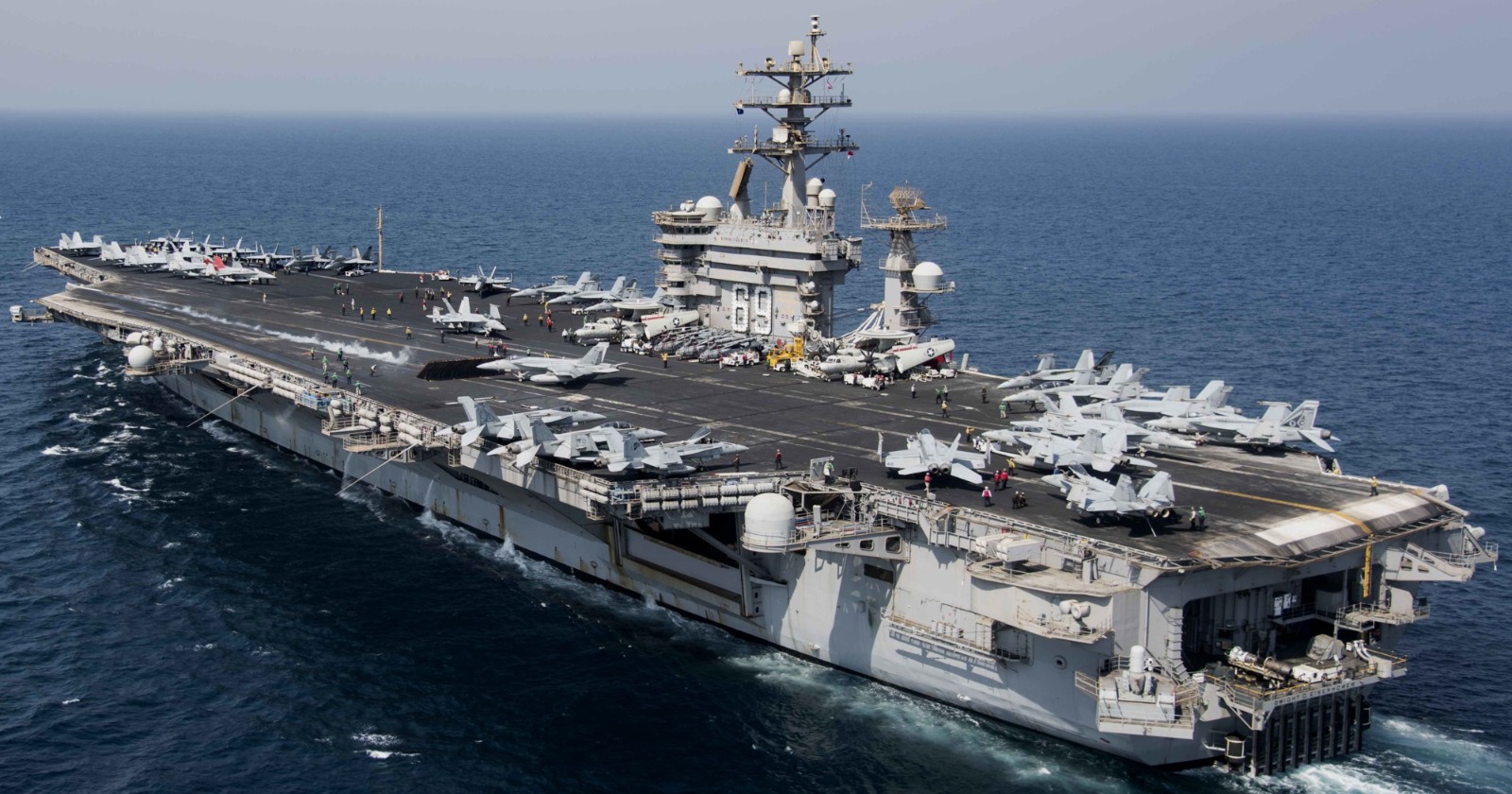A US Navy aircraft carrier is back in the Red Sea as American intelligence officials warn that the conflict with the Ansar Allah (Houthi) group may go on for a while.

USS Dwight D. Eisenhower
On Tuesday, a Navy spokesperson told Business Insider that the USS Dwight D. Eisenhower and Arleigh Burke-class guided-missile destroyer USS Gravely are back in the Red Sea to continue their maritime mission.
The USS Dwight D. Eisenhower left the Red Sea last month toward Souda Bay in Greece. The Souda Bay is located on the Mediterranean island of Crete and is a forward-operating station where American and NATO vessels can receive maintenance, food, fuel, ammunition, and supplies.
The spokesperson said the two ships were resupplied and rearmed while their sailors enjoyed relaxing downtime in the Souda Bay. It was their first pause since the Red Sea escalations began in the Red Sea in the wake of the Israeli war on the Gaza Strip.
The U.S. Navy’s Dwight D. Eisenhower Carrier Strike Group consists of the Ike, the Gravely, and several other warships. It has intercepted several Houthi missiles and drones that were fired at ships in the Red Sea and the Arabian Sea.
The Houthi group began their attacks on shipping lanes in November last year, saying that their assaults are part of their support for Palestinians in Gaza, where Israel has killed over 34000 people since October last year.
According to reports, the U.S. Navy has expended nearly $ 1 billion in missiles to counter the Houthi threats. In addition to intercepting drones and missiles, U.S. forces have also conducted strikes, targeting several Houthi sites in Yemen.
However, such strikes did not stop Houthis from launching attacks. The U.S. intelligence chief Avril Haines said last week the Houthis are “going to remain active for some time” because they continue to produce weaponry domestically and keep receiving support from Iran.
Meanwhile, Yemen’s Houthi group threatened Tuesday to expand its attacks on shipping lanes if the Israeli army invaded Rafah in the southern Gaza Strip.

Muhammad Muftah, the chairman of the Houthi-run Supreme Committee for Supporting Al-Aqsa, said, “The Israeli escalation in the Gaza Strip and the West Bank and their threat to invade Rafah will be met with a Yemeni response and the launching of the fourth round of escalation.”
“In case of any escalation (in Rafah), the Yemeni armed forces’ decision is clear, and a more extensive and broader escalation will occur,” Muftah said.
The United States Central Command (CENTCOM) said yesterday it intercepted Houthi drones launched from Yemen. It said in a statement, “Between approximately 11:02 p.m. and 11:48 p.m. (Sanaa time) on May 6, Iranian-backed Houthi terrorists launched three uncrewed aerial systems (UAS) over the Gulf of Aden from Houthi-controlled areas in Yemen.”
It added, “A coalition ship successfully engaged one UAS, U.S. Central Command (USCENTCOM) forces successfully engaged the second UAS, and the final UAS crashed in the Gulf of Aden.”





